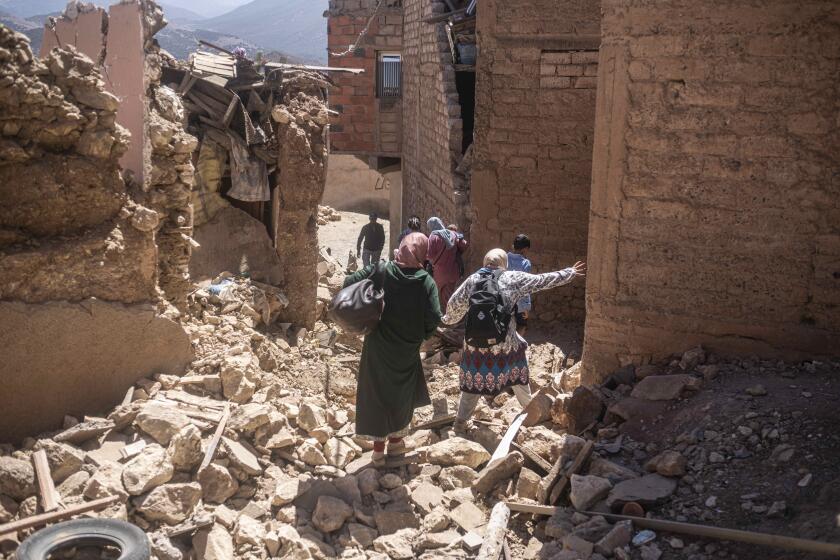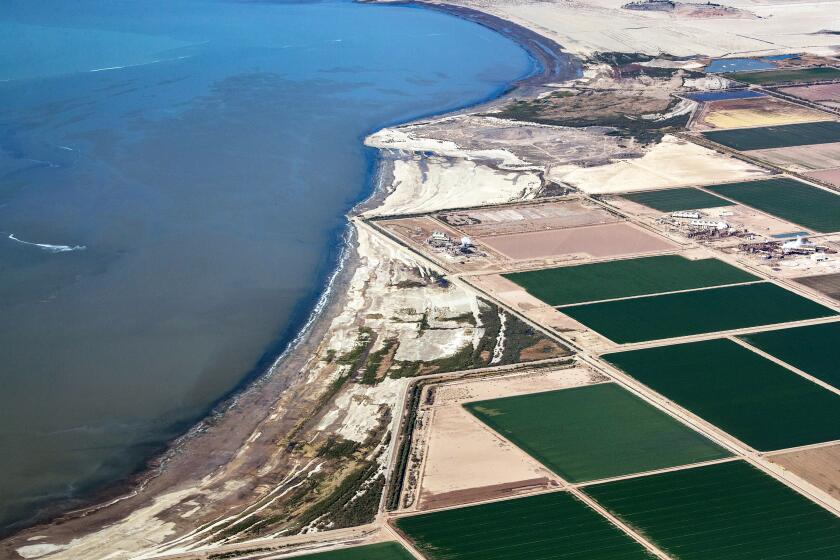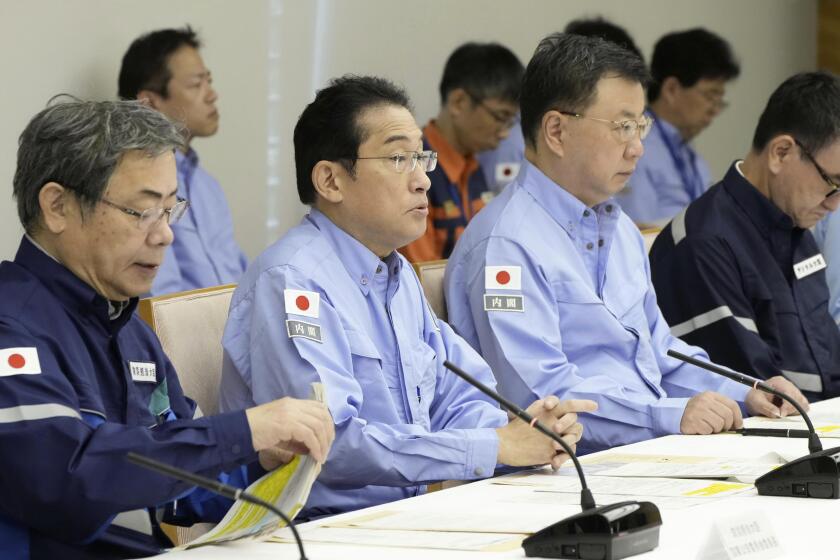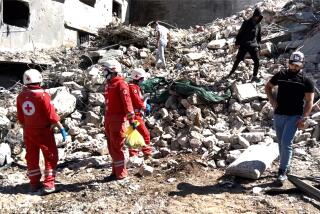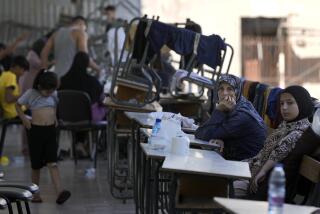Villagers mourn Morocco earthquake’s destruction of their mountain home
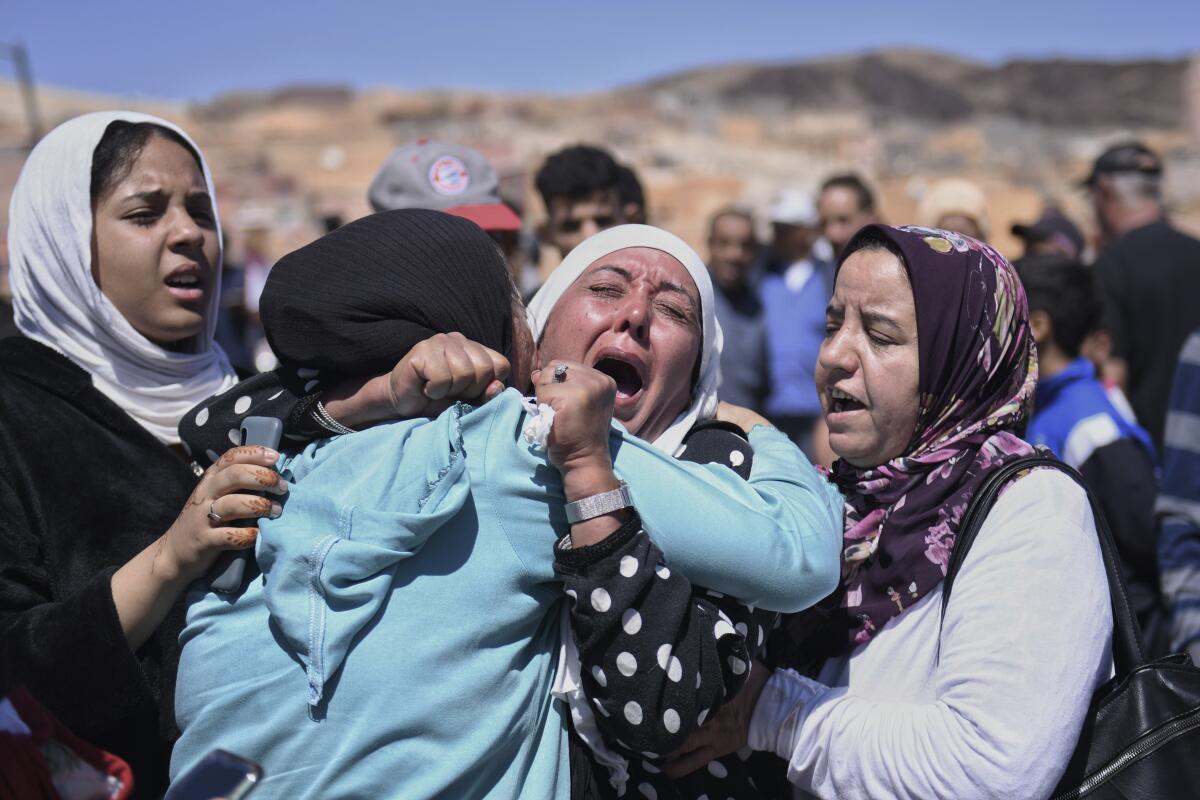
MOULAY BRAHIM, Morocco — The ground shook with a force few had ever felt, thundering through the remote Moroccan village in the dark of night.
When the earthquake was over late Friday, the town of Moulay Brahim, carved into the Atlas Mountains, lay devastated, with possibly dozens dead, scores of homes crumpled and walls reduced to rubble. Soon, crews were listening for desperate sounds of life within the ruins.
A village of fewer than 3,000 people, Moulay Brahim attracted tourists and outdoor enthusiasts with its stunning vistas and proximity to Marrakech. Streets brimmed with small hotels and cafes overlooking gorges and green valleys.
But after the 6.8-magnitude earthquake that killed more than 2,100 people across Morocco, the scene in the village is bleak.
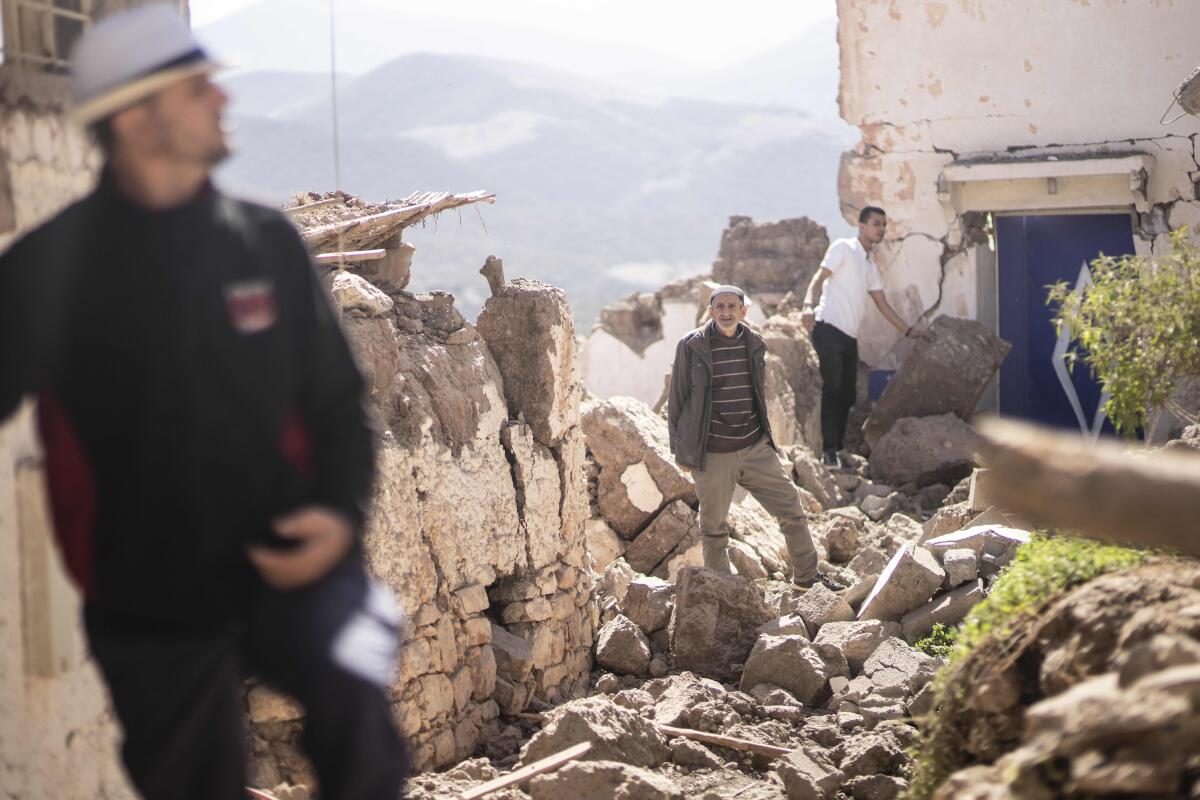
People in the poor rural community about 28 miles northeast of the quake’s epicenter live in homes made of clay brick and cinder block, many of which are no longer standing or safe to inhabit. Fallen walls exposed the innards of damaged homes, their rubble sliding down hills.
“We felt a huge shake like it was doomsday,” resident Ayoub Toudite said. “Ten seconds and everything was gone.”
Los Angeles-area Moroccans react to the devastating earthquake centered near Marrakech that killed more than 2,000.
Others, like 19-year-old student Abdelfattah El Akari, said the quake felt much longer, seeming to go on more than a minute. “The ground moved and homes cracked,” he said.
Chaos and terror followed as frightened villagers sought safety in the streets. When they returned to their neighborhoods, some used their bare hands to clear debris and pull out bodies, one after another. People gathered and cried outside a community health center as news trickled in of more deaths.
Search crews peered into crevices looking for more casualties or people in need of rescue following the biggest earthquake to hit the North African country in 120 years.
The majority of the deaths, which now exceed 2,400, were in Marrakech and five provinces near the epicenter, the Interior Ministry reported.
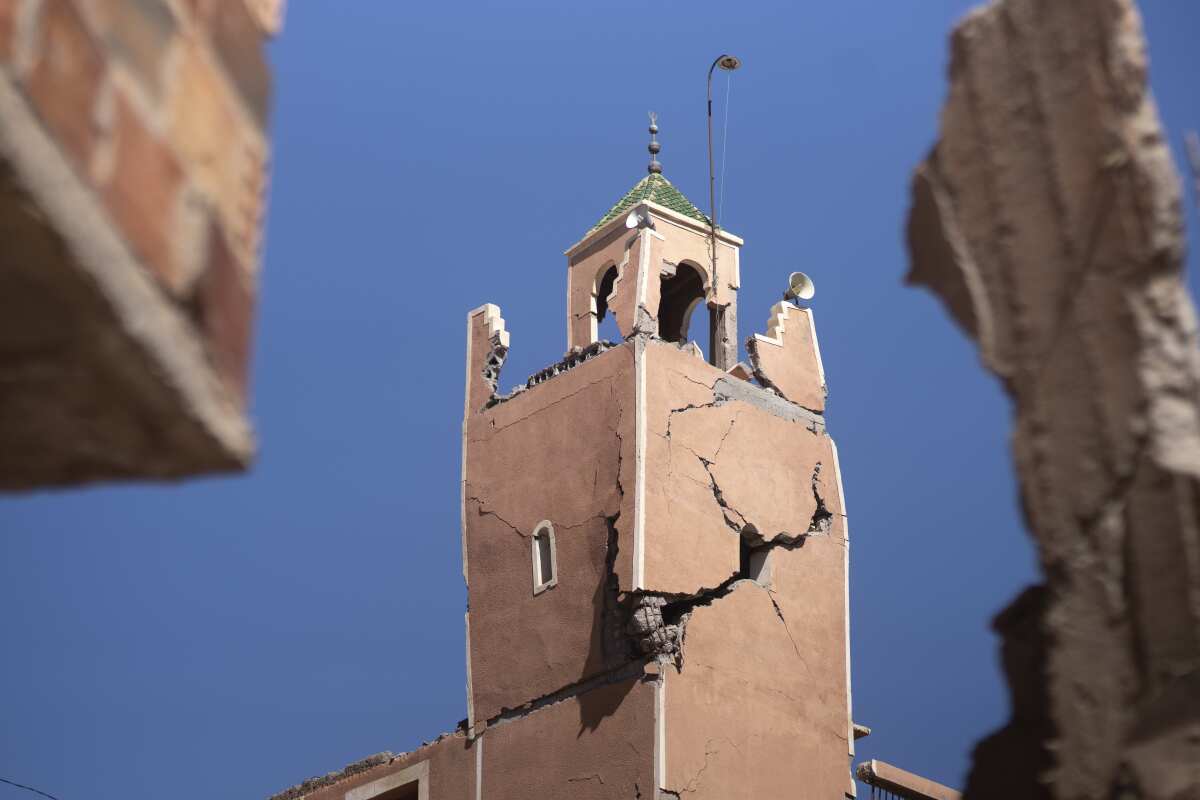
Authorities in Moulay Brahim warned that many areas remained too fragile to enter while there were still risks of aftershocks that could topple whatever remained standing. A minaret looming above Moulay Brahim was severely damaged and appeared at risk of collapsing in another temblor.
Hours after the tragedy, with sunlight exposing the extent of the damage, a procession of hundreds accompanied more than a dozen blanket-covered bodies to the town square. Men knelt on rugs and prayed for the dead during a brief funeral before carrying the deceased to a hillside cemetery. According to Muslim custom, burial should happen quickly after death.
Distraught parents sobbed into phones to tell loved ones about losing their children.
Villagers erected a large tent in the square, traditionally used for joyous occasions like weddings. In the coming days, the space will serve a much more somber role as a shelter for those who no longer have homes.
A drying Salton Sea may be helping delay the next Big One, but that could result in a more powerful quake when it does strike.
Toudite and other villagers appealed for help.
“People are suffering here very much. We are in dire need of ambulances. Please send us ambulances to Moulay Brahim. The matter is urgent,” Toudite said Saturday. “Please save us.”
The town also is in need of food and tents for people who have no place to go but the streets, he said.
The bulk of the town’s economy depends on agriculture and tourism. Time will tell how soon visitors will return to a place that had stood for centuries.
Japan’s prime minister takes part in a televised earthquake disaster drill on the 100th anniversary of a temblor that devastated the Tokyo region.
Moulay Brahim is named after a Moroccan Sufi saint who practiced a form of Islam valuing peace, love and tolerance, emphasizing meditation to reach a connection with God. The town’s people speak a combination of Arabic and Tachelhit, Morocco’s most widely spoken Indigenous language.
Hassan Ait Belhaj, who owns several rental properties in Moulay Brahim, said the buildings weren’t designed for such violent quakes and wondered how long it would take for the area to recover.
The Moroccan military deployed aircraft, helicopters and drones. Emergency services mobilized aid efforts to the hardest-hit areas, but roads leading to the mountain region around the epicenter were jammed with vehicles and blocked with fallen rocks, slowing rescue efforts.
Doctors picked shards of debris out of people’s feet and treated patients with surface wounds. The more critically injured were taken to a hospital near Marrakech, 37 miles to the north.
Breaking News
Get breaking news, investigations, analysis and more signature journalism from the Los Angeles Times in your inbox.
You may occasionally receive promotional content from the Los Angeles Times.
“Since the earthquake, we’ve worked almost continuously,” Abdelhakim Ait Idan, a Moulay Brahim doctor, said Saturday afternoon, more than 14 hours after the quake violently rolled through the village.
When Hamza Lamghani felt the tremble, he and his family darted outside. Then the lights went out. People used cellphones as flashlights. When it seemed safe to move, Lamghani and his family found their home and neighborhood reduced to rubble.
Five of his closest childhood friends had died, he said. Still in shock, he walked from the square filled with evacuees. “There’s nothing to do but pray,” he said.
More to Read
Sign up for Essential California
The most important California stories and recommendations in your inbox every morning.
You may occasionally receive promotional content from the Los Angeles Times.
